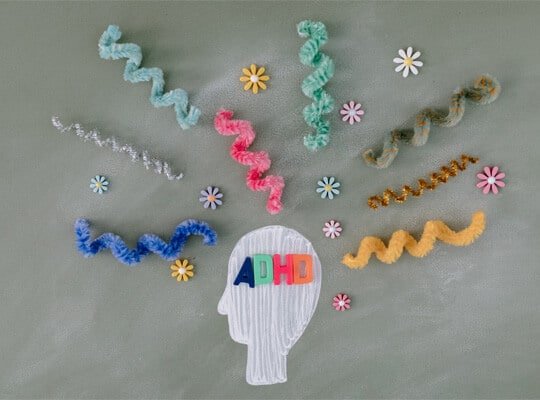Attention Deficit Hyperactivity Disorder (ADHD)
Table of Contents
Attention Deficit Hyperactivity Disorder (ADHD)
ADHD is a neurological condition that affects millions of children and adults. The most common symptoms include inattention, hyperactivity and impulsivity. It’s estimated that between 3%-5% of school-aged children have ADHD, but only about half are diagnosed. Although there is no cure for ADHD, treatment can help you manage your symptoms so that you can live a full life.
What is Attention Deficit Hyperactivity Disorder?
ADHD is a neurodevelopmental disorder that affects about 5-10% of the population. It’s characterized by inattention, hyperactivity and impulsivity.
These three symptoms can be present in varying degrees from person to person:
- Inattention: difficulty paying attention or staying focused on tasks and activities; distraction easily; forgetfulness; disorganization; procrastination; poor time management skills
- Hyperactivity/impulsivity: restlessness (can’t sit still); fidgeting with hands or feet when sitting down; excessive talking or interrupting others when they are speaking
- Difficulty playing quietly; not able to wait in line or when their turn comes.
The symptoms of ADHD can be mild, moderate or severe. In most cases, the condition lasts throughout a person’s life and affects many areas of their everyday life.


Is Attention Deficit Hyperactivity Disorder treatable?
ADHD is a neurodevelopmental disorder that can have a significant impact on the lives of both children and adults. It’s not curable, but it is treatable.
ADHD is a lifelong condition that requires ongoing support from parents, teachers and other caregivers to help manage symptoms throughout childhood into adulthood.
ADHD is often accompanied by other conditions, such as anxiety and depression. These co-occurring disorders can make it more difficult for people to manage their symptoms and may require additional treatments.
How to treat adhd
-
- Medication: Many people with ADHD find that medication helps them manage their symptoms. There are a variety of medications that can be prescribed, including stimulants and non-stimulants.
- Therapy: Cognitive behavioral therapy (CBT) has been shown to be effective in treating adults with ADHD by teaching them new ways of thinking and behaving so they can better manage their condition.
- Lifestyle changes: Making small changes in your life may also help improve your symptoms, such as getting enough sleep each night or exercising regularly.
While there’s no cure for ADHD, most people can manage their symptoms with a combination of these treatments.
With proper treatment, you can manage your ADHD symptoms and live a full life
- Medication
- Therapy, including cognitive behavioral therapy and dialectical behavioral therapy
- Behavioral therapy (such as parent training)
Behavioral therapy can help parents learn how to set limits with their child and how to respond when their child misbehaves. Cognitive behavioral therapy (CBT) may be used to treat ADHD in children or adolescents. CBT is a type of psychotherapy that focuses on thoughts, feelings, and behaviors. In CBT for ADHD, counselors help people change the way they think about situations that affect their attention and behavior.

One goal of CBT is to teach kids better ways to handle their emotions. For example, a child may learn how to calm down when he becomes angry or frustrated. He might also learn to identify situations that trigger his anger and frustration so he can avoid them in the future.Dialectical behavioral therapy (DBT) may also be used to treat ADHD. DBT is a type of psychotherapy that focuses on changing the way people think about situations that affect their attention and behavior. One goal of DBT is to teach kids better ways to handle their emotions. For example, a child may learn how to calm down when he becomes angry or frustrated. He might also learn to identify situations that trigger his anger and frustration so he can avoid them in the future
In conclusion, it’s important to remember that ADHD is a condition that affects millions of people around the world. It can be difficult to live with and sometimes hard even to recognize in yourself or others. But by understanding what it looks like (and what it doesn’t), we can better identify those who need help managing their symptoms so they can lead happier lives.
For More Information
Please do not hesitate to contact us for more information on the subject.



